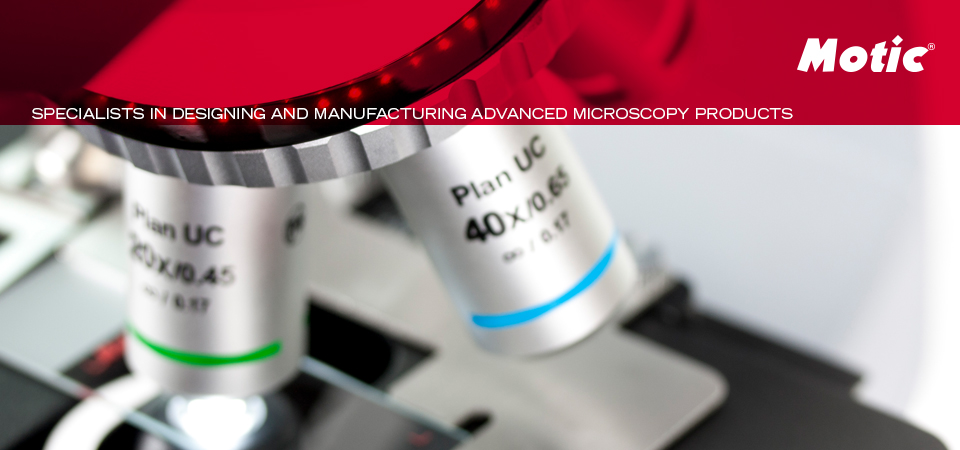Thursday 27 August 2020
Haematococcus pluvialis - The red colored green alga
Haematococcus pluvialis is a single celled green freshwater alga found all over the world. Each cell is encased in a transparent capsule and varies in size from 10-50 microns depending on its life cycle stage, but most are around 20 microns. H. pluvialis can be found in two major stages, active and inactive. In the active stage the algae are motile and move with two long whip-like projections called flagella. In the inactive stage the cells become non-motile encased cysts which are able to tolerate periods without water and huge temperature fluctuations. One of the protective strategies the algae use during the non-motile stage is the production of a molecule called astaxanthin.
Tags:
algae,
BA Elite Serie,
BA310 Elite,
BA310E,
Haematococcus pluvialis,
microscope,
microscopy,
motic,
MOTIC EUROPE,
moticam,
Moticam Pro S5 Lite,
Moticam S Series,
science
Tuesday 25 August 2020
Typical for dicotyle plants
On the photos we see a cross section of the root of the Ranunculus. The specific arrangement of primary tissues shown here, is typical of dicotyle plants.
Wednesday 19 August 2020
Plasmacytoma dog
In the preparation shown here a biopsy taken from the skin of a seven-year-old Golden Retriever, many plasma cells can be seen. We also see anisocytosis and anisokaryosis. The coarse chromatin in the nucleus indicates that something may be wrong. Plasma cells are part of the immune system and are usually found in lymphatic tissue and mucosal surfaces. Plasma cells are immunoglobulin-producing cells that originate from B lymphocytes and are characterized in particular by a large amount of cytoplasm, an eccentrically located nucleus and a perinuclear optically empty court.
Thursday 13 August 2020
About blood
Blood forms the transport system of the body. It flows continuously to supply oxygen and nutrients to tissue and to remove waste products. It also plays an important role in the defense against pathogens in the body and ensures a constant body temperature. Blood is an important transport medium for hormones. So blood literally means life!
About half of the human blood is plasma. Blood plasma mainly consists of fluid and proteins. The other half of this blood consists of blood cells, namely: red blood cells, white blood cells and platelets. For example, the red blood cells transport oxygen and carbon dioxide through the body. The white blood cells make harmful substances and pathogens recognizable and harmless. Platelets provide crusting to a wound.
About half of the human blood is plasma. Blood plasma mainly consists of fluid and proteins. The other half of this blood consists of blood cells, namely: red blood cells, white blood cells and platelets. For example, the red blood cells transport oxygen and carbon dioxide through the body. The white blood cells make harmful substances and pathogens recognizable and harmless. Platelets provide crusting to a wound.
Tuesday 11 August 2020
Rotifers - Some of the smallest animals on earth
Rotifers are some of the smallest animals on the planet. Most measure under 500 microns, but their size can range from only 50 microns to around 2 mm (2000 microns). They are some of the most common microscopic animals, living all over the world in all kind of environments, like freshwater, saltwater, in moss on trees and in the soil underneath your feet. Rotifers are made up of roughly 1000 cells, some of which are specialized to form organ systems. Despite their incredibly small size they have eyes, a small brain and nervous system, and a dedicated digestive system just like us.
Tags:
BA310 Elite,
BA310E,
microscope,
microscopy,
motic,
MOTIC EUROPE,
moticam,
Moticam Pro S5 Lite,
Moticam S Series,
Oblique illumination,
Organisms,
Rotifers,
science
Friday 7 August 2020
A find on the beach
The shells or shields on the back of the various species of cuttlefish Sepia spec. consist of brittle lime (sometimes also referred to as Sea Foam) and are softer on one side than on the other. There is gas between the layers of lime, so that they float and often wash up on the beach.
Cuttlefish are good swimmers who can cover large distances. Sometimes animals wash ashore on the coast, but more often loose back shields. They have good buoyancy and can wash up on the beach at a great distance from the place where the animal died.
Subscribe to:
Posts (Atom)






